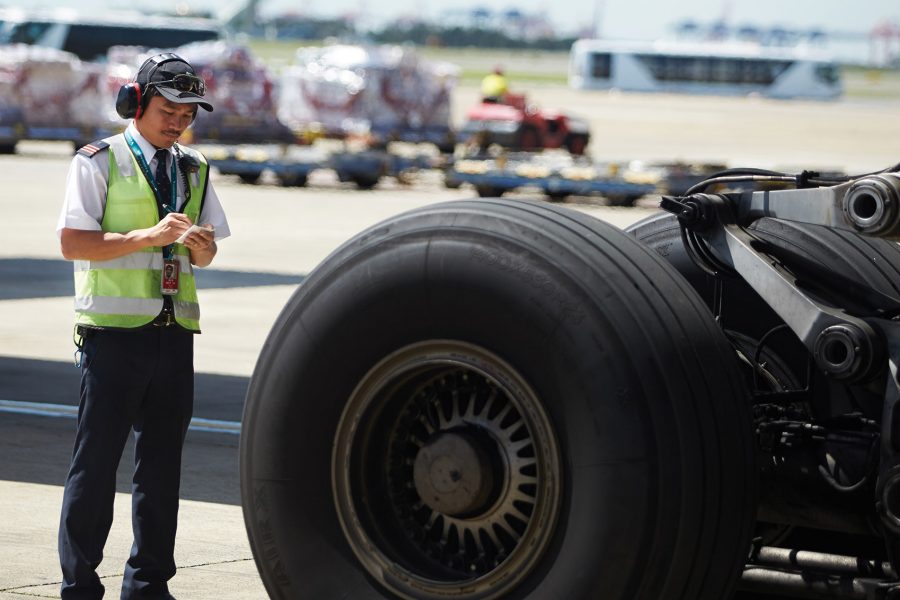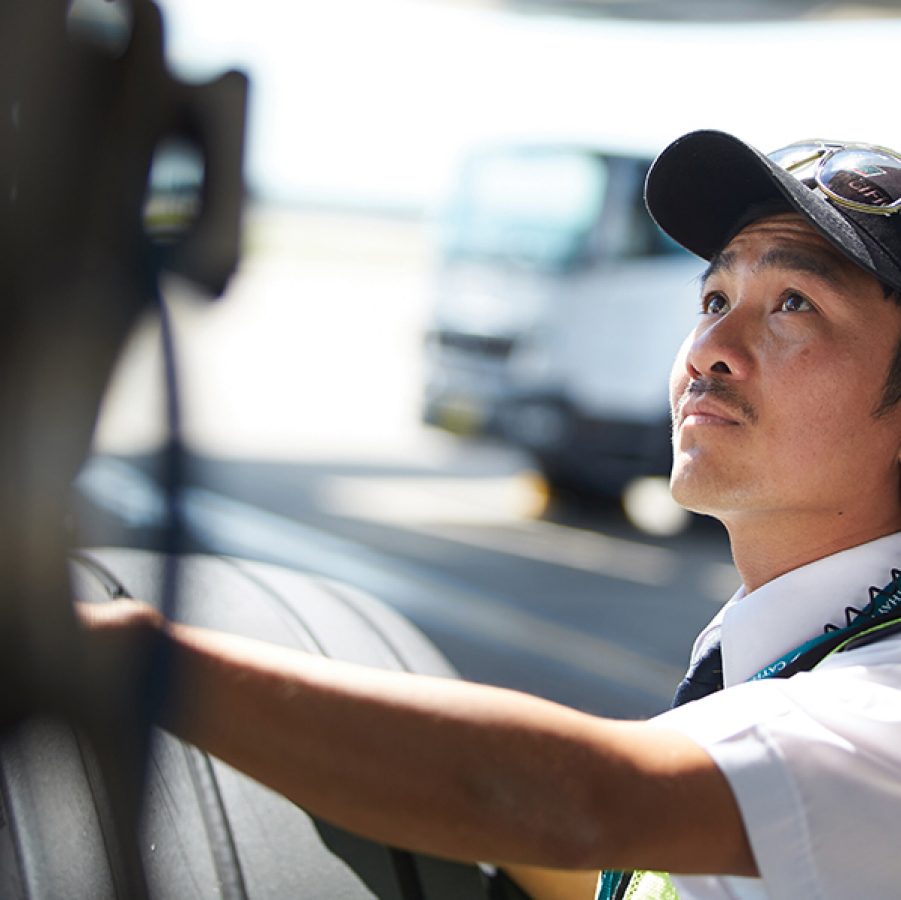A tale of tyres: how aircraft wheels ensure a smooth journey

When we think of the aircraft we fly on – and the wonders of flight ��– we tend to think of aerodynamic wings hewn of new lighter, stronger materials. Ever more powerful yet fuel-efficient engines whisking us to our destination. But spare a thought for the tyres, the unsung heroes that carry these aircraft – and us – to and from the runway before we’re whisked into the air.
On the ground, an airliner is very much a heavy goods vehicle, with multiple wheels to match. “Our biggest aircraft, Cathay Cargo’s Boeing 747-8F freighter, can weigh up to 450 tonnes at take-off, which includes the aircraft itself and the cargo and fuel it’s carrying,” says Cathay Pacific’s Head of Line Maintenance John Brownen.
During each landing and take-off, each of the plane’s 16 main and two nose wheels is supporting an aircraft operating at the high speed of about 160mph. “Each individual main tyre is designed to withstand extremely heavy loads of around 28 tonnes, which is more than the weight of a city bus,” adds Brownen.

That’s a lot of stress, so these tyres clearly need a bit more heft than a car’s. Each main wheel assembly – that’s tyre and hub – weighs more than 200kg and has a diameter of almost 1.5 metres. “The tyres are pumped up to more than 200 pounds per square inch, which is more than six times the pressure of a car tyre,” says Brownen. “This allows the tyres to support the weight of the aircraft at take-off and landing speeds.”
Unlike a car’s, aircraft tyres are inflated with nitrogen rather than air. Nitrogen is more capable of withstanding the temperatures and high pressures experienced in service – and unlike air, it’s not combustible. After the engine, the brakes after landing are probably the second-hottest spot on a plane, so a blowout of air onto hot metal would be unwelcome.
The tyres are lined with straight grooves to disperse water, with tread patterns become less pronounced over time and landings. Tyres are checked after every flight, and once the tyre tread is less than 1mm deep then it needs to be changed. “If a tyre doesn’t get damaged by factors including rolling over a foreign object, it will last 200 to 300 flights,” says Brownen. When the time comes for a replacement, it takes two of Brownen’s line maintenance team an hour to jack up the wheel in question and replace it with another. To that, at least, a car driver may be able to relate.
More inspiration
- China – the Chinese Mainland, Hong Kong SAR, Macao SAR and Taiwan Region
- Hong Kong SAR - English
- Chinese Mainland (China) - English
- Taiwan, China - English
- 香港特別行政區 - 繁體中文
- 中国內地 - 简体中文
- 中國台灣 - 繁體中文
- Africa
- South Africa - English
- Americas
- Canada - English
- Canada - Français
- United States - English
- Asia
- Bangladesh - English
- Korea - English
- Singapore - English
- Cambodia - English
- 한국 - 한국어
- Sri Lanka - English
- India - English
- Malaysia - English
- Thailand - English
- Indonesia - English
- Maldives - English
- ประเทศไทย - ภาษาไทย
- Indonesia - Bahasa Indonesia
- Myanmar - English
- Vietnam - English
- Japan - English
- Nepal - English
- Việt Nam - tiếng Việt
- 日本 - 日本語
- Philippines - English
- Australasia
- Australia - English
- New Zealand - English








